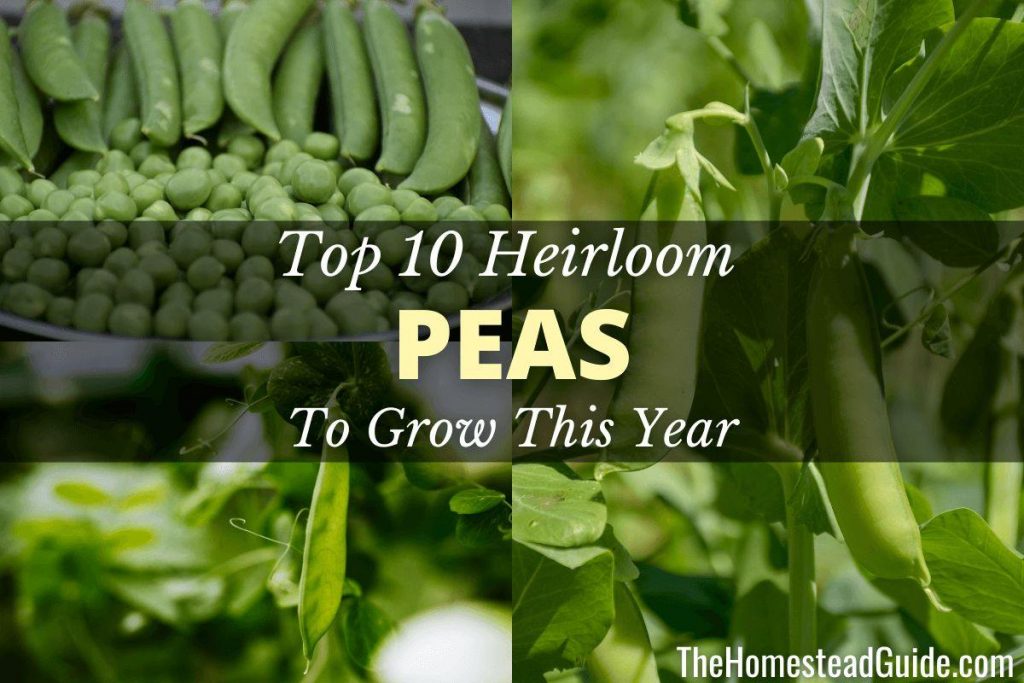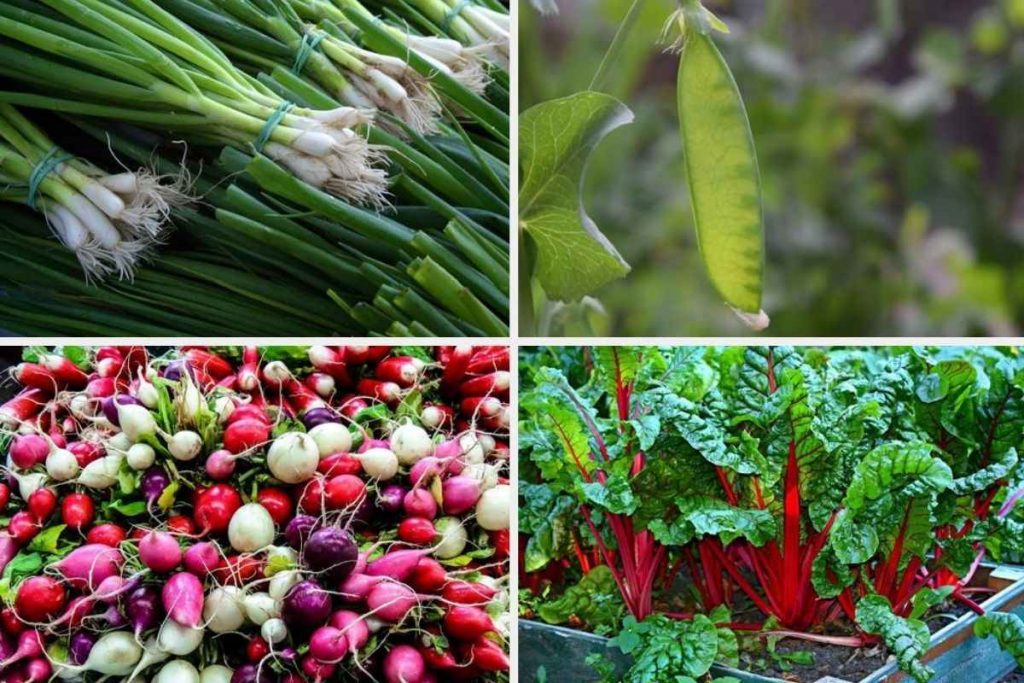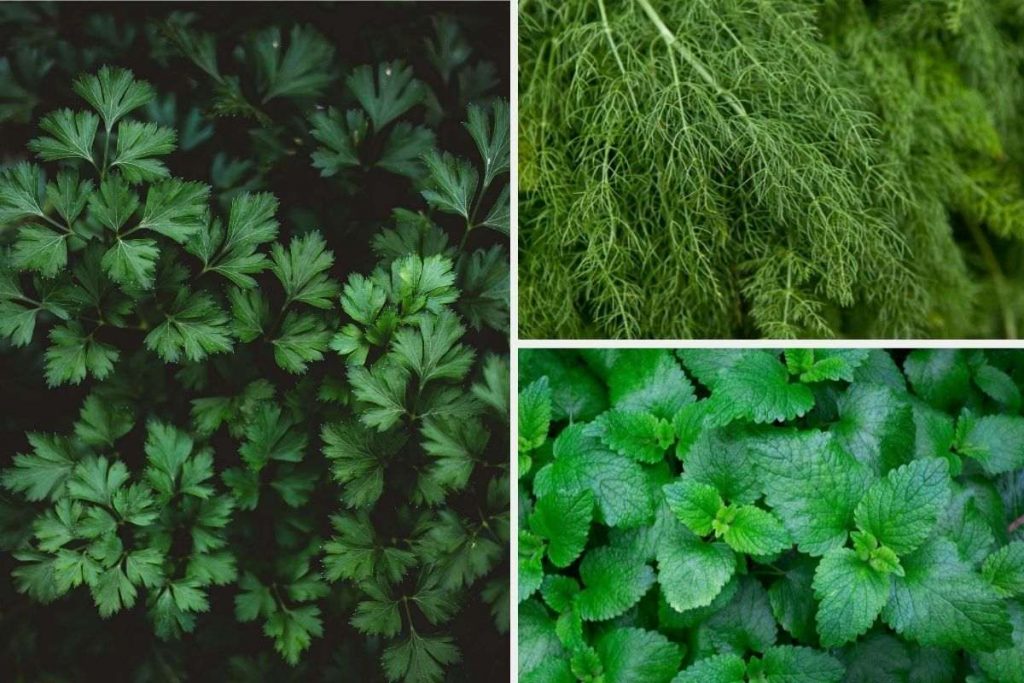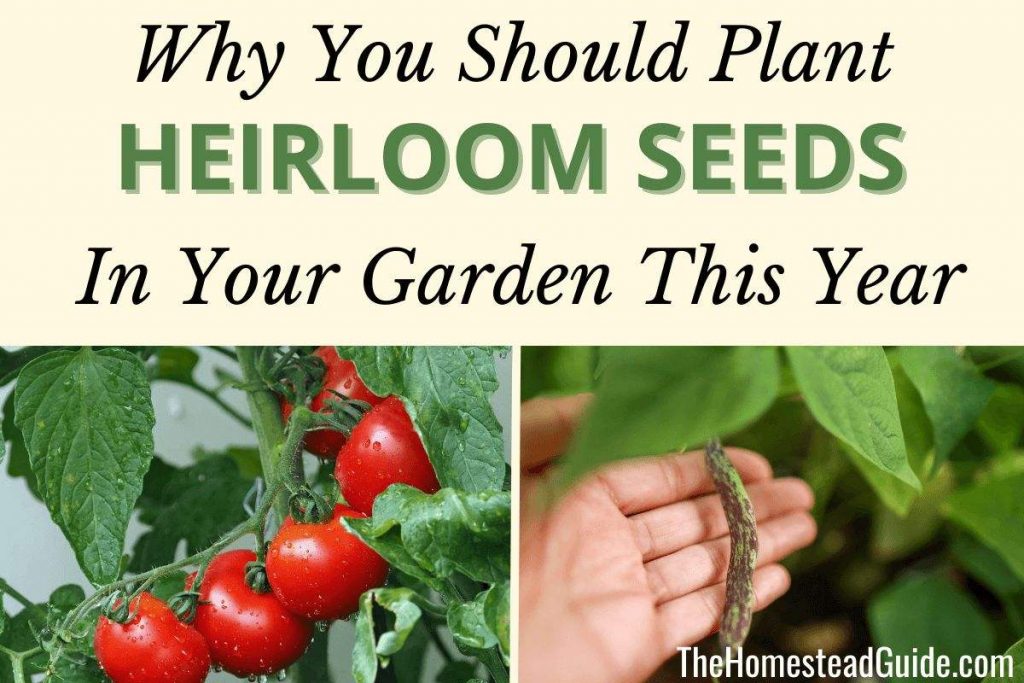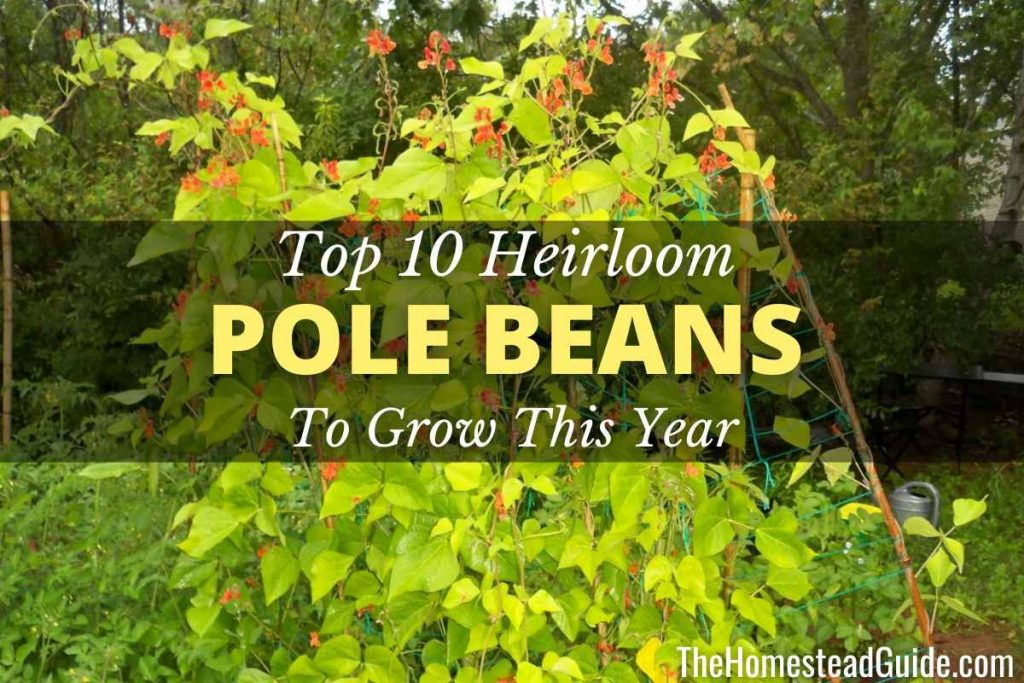Children and adults alike can’t resist that sweet crunch of fresh green peas straight from the garden. With peas being a cool weather crop, they are usually the first thing you plant each season, making peas the exciting sign that spring is here and gardening season is upon us.
Peas are a great crop to grow in your garden, and there are many different varieties to choose from. If you’d like to save your seeds so that you don’t have to buy more every year, try growing some heirloom peas. These peas have been grown for many years, and they’re known for their flavor and resilience.
In this article, I go over my top 10 favorite heirloom peas to grow in your garden. So if you’re looking for a new crop to try this year, consider planting some of these heirloom peas. You won’t be disappointed!
Before we get to the list, let’s go over a few things first:
Snow Peas vs. Snap Peas vs. Garden (Shelling) Peas – What’s the Difference?
If you’re a fan of fresh peas, you may be wondering what the difference is between snap peas, snow peas and garden peas. Both snap peas and snow peas are varieties of the common garden pea, and they are often used interchangeably in recipes.
Snow Peas have crisp and flat pods, which are entirely edible. They are sometimes called Chinese peas in the grocery store, and they are commonly used in stir-fries, salads or eaten raw. The main difference between snow peas and snap peas is that snow peas are flat and snap peas are plump.
Snap peas are many people’s favorites, mine included. The entire pea, including the pod, is edible. These peas are thick, crunchy and sweet. Snap peas are often used raw in salads or as a healthy snack, while snow peas are more commonly cooked in stir-fries.
Garden peas, on the other hand, are shelling peas, and only the inner pea is meant to be eaten. These are where you get your individual green peas from. The outer pod is very tough and fibrous and is not edible.
Tips for Growing Heirloom Peas
- Full sun: Peas should be planted in a spot that gets 6-8 hours of full sun a day. They can tolerate some light shade in warmer climates, since the heat of summer will start to stunt their growth.
- Cool soil: Peas are a cool weather crop, so they should be planted in early spring as soon as the ground is thawed and can be worked. They can tolerate and even enjoy a light frost. Peas will be one of your first veggies of the year that you plant and will be done for the year by mid-summer, although they can be sown again for a fall harvest.
- Regular watering: Peas require regular watering, especially during dry spells.
- Nitrogen fixers: Peas are legumes like beans, and legumes are nitrogen fixers. This means they pull nitrogen from the air and add it to the surrounding soil through their roots. Legumes being a natural nitrogen fertilizer is a great example of why companion planting is so important in organic gardening. This makes them excellent companions for a lot of plants including carrots, cucumbers, beans (pole or bush), arugula and spinach.
- Harvesting: Peas are ready to harvest when the pods are plump and have reached their full size. You can tell if a pod is ready to harvest by gently squeezing it. If it feels full and firm, then it is ready to be picked.
1. Sugar Snap
I can’t start off my list without naming this one: the original snap pea – the one that started it all. This is the classic garden snap pea variety, and with its plump, juicy and sweet pods, you won’t be able to stop yourself when they are ready to eat! This is hands-down my favorite green pea variety and should be a staple for every gardener.
Days to Maturity: 65
Best For: Eating raw, stir-fries
Available at Hoss Tools.
2. Green Arrow
This is an excellent English heirloom pea variety that tastes great and produces large yields of long pods meant for shelling. The pods grow in pairs, and each one has about 10 peas in it. I would say that this is a good all-purpose pea, and you’ll definitely get a good harvest out of it.
Days to Maturity: 60
Best For: Shelling, eating fresh, freezing, canning, drying
Available at Hoss Tools.
3. Oregon Sugar Pod II
This is an heirloom snow pea specifically bred for the Pacific Northwest. Especially in this area, this is a super reliable snow pea with stringless pods and an incredible resistance to diseases like the Pea Mosaic Enation Virus, Fusarium Wilt and powdery mildew. These peas are great for a spring harvest and also a fall harvest if you plant new seeds in late July-mid August.
Days to Maturity: 65-70
Best For: Eating raw, stir-fries
4. Alaska
This is a great heirloom pea variety if you’re looking for something that matures early and yields heavily. This heirloom shelling pea dates all the way back to 1880, and it is one of the earliest maturing peas out there. Peas are ready to shell and eat fresh after 55 days, or if you are looking to dry the peas for soup and storing, let the plant mature to 80 days.
Days to Maturity: 55-80
Best For: Shelling, eating fresh, drying
5. Sugar Daddy
This is a delicious, stringless heirloom snap pea variety. This is a bush-type pea, so their vines only reach about 24 inches tall, so they don’t need a lot of support if any. These peas are a beautiful, rich green color and are high in natural sugars, making them absolutely scrumptious straight off the plant! You can eat them whole or shell them, and they are an excellent choice for beginner gardeners.
Days to Maturity: 60-65
Best For: Eating raw
6. Thomas Laxton
This classic heirloom pea originated back in the 1800s in rural England and still continues to be a favorite among those who know about it today. This is a shelling pea, so the pod is not edible. Thomas Laxton peas are beautifully sweet, making them perfect for eating fresh, as opposed to starchier peas, which are better for canning. These peas do really well everywhere but particularly in cooler, coastal areas, and they are wilt resistant as well.
Days to Maturity: 60-70
Best For: Shelling, eating fresh
7. Super Sugar Snap
This open-pollinated variety is an improved version of the Sugar Snap heirloom. Both varieties are delicious and sweet, and this variety matures about 6 days earlier and grows a bit of a plumper pod. So if your favorite part of snap peas is the peas inside, you may prefer this variety, or if your favorite part is the crunchy pod itself, you may prefer the original Sugar Snap. I highly recommend either choice!
Days to Maturity: 60-70
Best For: Eating raw, stir-fries
8. Mammoth Melting Sugar
This heirloom snow pea variety is among the largest out there. The pods get huge, up to 4-5”, and they are sweet and tender. The flowers are known to be beautiful as ornamentals and are sometimes used as cut flowers, but I bet you’d rather let those flowers turn into sweet snow peas instead! This variety does really well in cooler temperatures, so definitely plant early in the spring.
Days to Maturity: 70
Best For: Eating raw, stir-fries
9. Wando
This heirloom pea variety from the 1940s is more heat tolerant than others, so it can be planted a little later and will last a little longer into the summer. It’s also cold tolerant, too, so don’t let it stop you from planting early on just as you would your other peas! This is a shelling pea that is very versatile; the peas are good for eating fresh, canning or freezing.
Days to Maturity: 70
Best For: Shelling, eating fresh, canning, freezing
10. Taiwan Sugar
If you’re looking for the perfect snow pea for stir-fries, this is it! These heirloom snow peas are super productive and the pods are satisfyingly crisp and sweet. A lot of people consider this as the sweetest snow pea out there. If you’re making an Asian-style stir-fry, the sweetness of the snow peas combines wonderfully with the saltiness of the sauce.
Days to Maturity: 63
Best For: Stir-fries, eating fresh
Conclusion
These are my 10 most recommended heirloom peas to grow in your garden. I always grow heirloom or open-pollinated varieties so I can save the seeds every year. And there’s just something about growing old, beloved varieties that is so good for the soul. When there are endless hybrid varieties coming out every single year, it’s nice to keep a part of history alive.
What is your favorite heirloom or open pollinated pea variety? Do you prefer snap peas, snow peas or garden peas? Let me know in the comments! Also, check out our top 10 heirloom pole beans and top 10 heirloom bush beans for some great complementary legumes!
Looking for more cold-weather crops to get started early in the spring? Check out my top 10 heirloom beets for some inspiration!
And if you’re looking to get started with homesteading and organic gardening, make sure to check out our Complete Guide to Organic Gardening and why you should plant heirloom seeds this year.
Thanks for reading!

